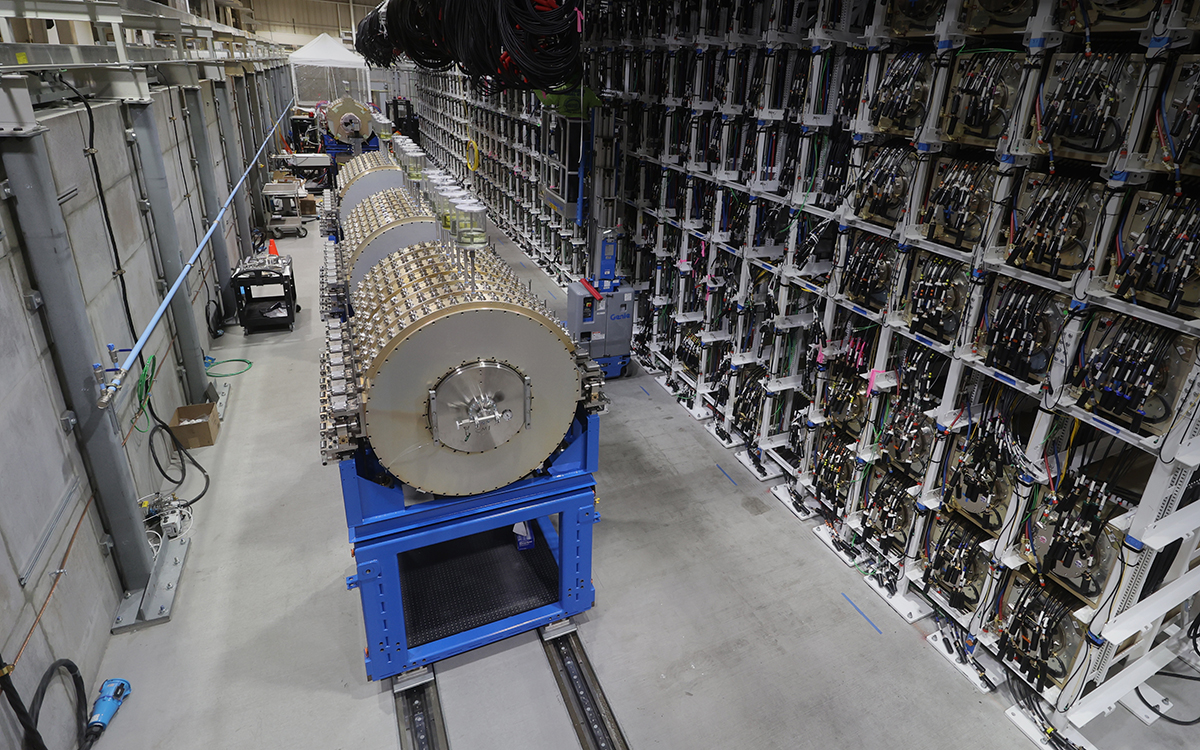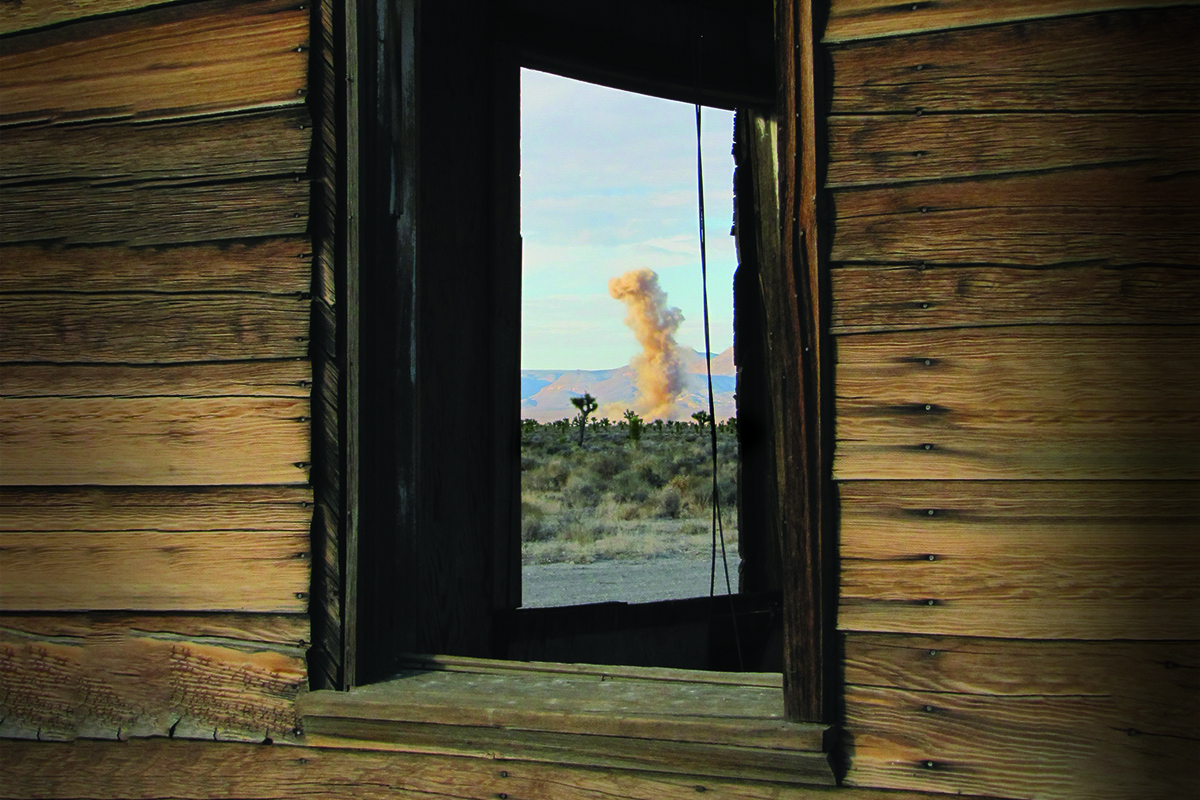The machines behind the mission
Three devices allow scientists to probe plutonium implosions.

Inside the Principal Underground Laboratory for Subcritical Experimentation, Cygnus and two forthcoming machines, ZEUS and Scorpius, offer insights to ensure the safety, security, and reliability of the nation’s nuclear weapons.
Cygnus
What it does
- The Cygnus device provides dual-view x-ray images (called radiographs) of explosively driven plutonium implosions.
How it works
- Uses pulsed power to fire electron beams into metal targets from two perpendicular angles.
- High explosives detonate, shocking the plutonium.
- When the electron beams hit the targets, x-ray bursts are generated.
- X-rays pass through the shocked plutonium, and x-ray detectors capture a snapshot of the behavior of the material in the early phases of a plutonium implosion. The process is similar to, though much more powerful than, a dental x-ray.
Why it matters
- Cygnus provides a way to “see inside” a plutonium implosion. It lets scientists examine how plutonium compresses and helps them evaluate what happens during the early stages of the implosion. Cygnus was first used for a subcritical experiment in 2004 and is still in use today. The device captures snapshots of the plutonium implosion at two points in time, not the full progression of the experiment.
ZEUS
What it does
- ZEUS (Z-pinch experimental underground system), which is still in development, will use a dense plasma focus Z-pinch device that provides a short pulse of neutrons. The neutrons trigger fission, allowing scientists to measure the imploding system’s nuclear reactivity—meaning how close it is to sustaining a chain reaction. The Z-pinch device is used in conjunction with a gamma ray detector array.
How it works
- Generates a short, high-energy neutron flash. The neutrons strike the plutonium just as it’s compressed, causing the plutonium to fission.
Used in conjunction with a device that detects the resulting gamma rays to measure how close the system is to criticality.
Why it matters
- ZEUS will measure the subcritical reactivity (how far a system is from criticality) of a nuclear implosion by measuring the decay of fission chains. This dynamic criticality data will be used to further develop and refine the modern predictive physics models used to certify the stockpile.
Scorpius

What it does
- Scorpius, which is still in development, is a high-energy linear accelerator that will take a four-frame “movie” of the later stages of a plutonium implosion when the densities are highest.
How it works
- Produces four timed electron pulses, each creating an intense x-ray flash.
- Creates a series of images that show how plutonium changes over time during the final stage of implosion.
- Will also create photofission, a type of nuclear fission triggered by high-energy gamma rays, to provide additional information about the subcritical reactivity of the imploded device.
Why it matters
- Scorpius will fill the biggest remaining gap in subcritical research by allowing scientists to watch a full implosion unfold and evolve over time—physics no current diagnostic system can fully capture. Scorpius is also energetic enough to conduct tests on complete weapons assemblies. ★








